The seemingly disparate realms of art and education help us as humans to explore the values that matter to us both individually and as a society, and at this intersection we may discover a creative balance: “All students need a strong foundation in humanities, they help us explore the values that matter to us as a society and as individuals.” 1 Art is one of the humanities subjects and for a long time it has been recognised as an important part of a well-rounded education. The invaluable inclusion of art as a foundation within educational systems cannot be overstated, this can be seen in schools that integrate arts within their core curriculums: “Weaving the arts into everything they do and finding that the approach not only boosts academic achievement but also promotes creativity, self-confidence and school pride.” 2
- Dr. Schneider, C. Montgomery College (2014). What are the humanities and why are they important?. [Video] Retrieved 8 January 2020, https://www.youtube.com/watch?v=ytR3wxwVBd0
- Schwartz, K. (2015). How Integrating Arts Into Other Subjects Makes Learning Come Alive. Retrieved 10 January 2020, from https://www.kqed.org/mindshift/38576/how-integrating-arts-into-other-subjects-makes-learning-come-alive
The term education itself can be defined as a system that not only imparts specific subject knowledge, but also as a tool for socialization and integration. Education, specifically group education, teaches us how to behave as an individual and simultaneously how to adapt and contribute to the wider community. According to the Norwegian teacher’s handbook Life in school (2018): “All teachers contribute to the process of improving a society, where the aim is that the student can behave like an individual and simultaneously adapt and contribute to the collective community.” 3
- Lillejord, Manger, Nordahl, S. (2015). Livet i skolen 2 (2nd ed., p. 33). Bergen: Fagbokforlaget.
It could be argued that society’s development, and that of the individual within it, is the point where art and education intersect. As philosophical fields, art and education are seemingly inseparable and yet in practice are often paradoxical; where education explores (or dictates) the values that matter to us within a structured system, it can divide us, creating false barriers between identities and ideas. Art by nature challenges and questions the fairness of the very systems that it is built upon, and draws connections between seemingly unrelated or oppositional ideas.
The divisive nature of the education system can be traced back to Plato’s vision of an ideal state in which people were divided into gold, silver and bronze categories based on their skills. This organizational structure can easily be compared to current practices of student assessment by grading and standardized testing. These limited tools often play an oversized (and some might say out-dated) role in deciding the next courses students will take, the type of work students will go on to do as adults, and the amount of money they will earn, thereby fitting them from childhood into a socio-economic class system.
Paradoxically, the best educational systems can also teach students to question the system itself in order to develop society as a whole: “In the education system students should not only acquire knowledge, skills and a suitable attitude, but also learn to question established truths, traditional values and approaches, in order to contribute to the development of society as a whole.” 4 This is one of the key areas where art comes into play. New perspectives can be experienced through art because it pushes us to see things differently, allows us to think for ourselves, and to arrive at our own conclusions about what we value and how to live nurturing, productive lives: “Art can engage people to think about things in a different way…it’s a big tool at making society better as a whole.” 5
- Lillejord, Manger, Nordahl, S. (2015). Livet i skolen 2 (2nd ed., p. 33). Bergen: Fagbokforlaget.
- Tate Exchange. (2020). Can art change society? [Video]. Retrieved from https://www.tate.org.uk/art/tate-exchange/can-art-change-society
Both art and traditional education are necessary: traditional educational systems provide a structure for learning, while art balances and disrupts this framework by letting the system breathe. Art serves as a release valve and as a network creator. At the extreme, education can be seen as a societal programming tool, creating people to be the same, like the title of the Pink Floyd song suggests “Another brick in the wall.” But with the inclusion of art within education, individuals are encouraged to take in presented knowledge while are the same time finding their own way of living according to their own values within society: “Art in schools shouldn’t be sidelined…it should be right there up in front because I think art teaches you to deal with the world around you. It is the oxygen that makes all the other subjects breathe.” 6
- Tate Exchange. (2020). Why study art? [Video]. Retrieved from https://www.tate.org.uk/art/talking-point/why-study-art
One of the main challenges to this integrative approach is the misunderstanding of art as an “extra-curricular activity” rather than as an integral part of learning core subjects. Art is not valued highly enough within educational systems around the globe, and this contributes to its low value in society at large. Creativity is an invaluable key to societal improvement, but too often it lacks the obvious and immediate monetary value recognized in an increasingly capitalist world system, which drives educational systems and taught values.
A capitalist system values product and efficiency over process, but in art as in life the process is truly invaluable. Learning happens in the process and failure is a necessary part of it; through failure development happens, allowing the boundaries of what we thought possible to be stretched and new ideas to be generated: “Art opens all of those kind of passages and possibilities to think beyond what we already know.” 7 Societal improvement can happen if instead of valuing the outcome, we value the process of lifelong learning through art.
- Tate Exchange. (2020). Why study art? [Video]. Retrieved from https://www.tate.org.uk/art/talking-point/why-study-art
“Art teases out a value that has been neglected by a world with a deeply distorted and unfair sense of what truly matters. . . highlighting what is genuinely worth appreciating.”
–Philosopher, Alain De Botton – Guardian Culture Film: What is art for?
A tangential negative effect of art not being valued highly enough is that art teachers are not given the time they need to work within the creative process and develop their own artistic practices. This time is valuable and vital to their overall creative balance and it enables teachers to deliver inspiring and effective art classes that lead to the positive development of the individual and society.
Simultaneously creating art and teaching, as so many artists do, places art teachers directly at the intersection of art and education. It gives them a chance to define the values that they find important as an artist and to encourage and nurture students to follow their own path and develop as individuals as well as learning to find their own contribution to their communities.
As within the education systems as a whole, achieving a creative balance is the aim for those teaching artistic subjects as well. If the artistic process were valued more highly and time was specifically allocated for art teachers to develop their practice within their educational work, the benefit to themselves and their students would be far-reaching. In lieu of this, the only solution is to breathe life into the system by finding alternative ways to discover this time. Three inspiring artists and teachers from Norway and England have done exactly this – they have each in their own way prioritized nurturing a creative balance between their educational duties as teachers and their own creative artistic practices.
The educational theory aktørperspektivet is a positive learning perspective that teachers can adopt for themselves, and thereby encourage their students to utilise. It involves seeing themselves as an active agent in their own lives, enabling them to be a positive influence in shaping their own future. Adopting this perspective entails the teacher having a conscious understanding of themselves and encouraging their students to do the same: “Teachers can influence their students understanding of themselves by seeing him or her as an aktør (active agent) in their own lives.” 8 The three artists I will look at have all adopted this theory and created agency in their own lives. They have defined and pursued what is most important to them in order to nurture a creatively-balanced life, and learning from their example, students have been inspired to do the same.
- Lillejord, Manger, Nordahl, S. (2015). Livet i skolen 2 (2nd ed., p. 126-128). Bergen: Fagbokforlaget./li>
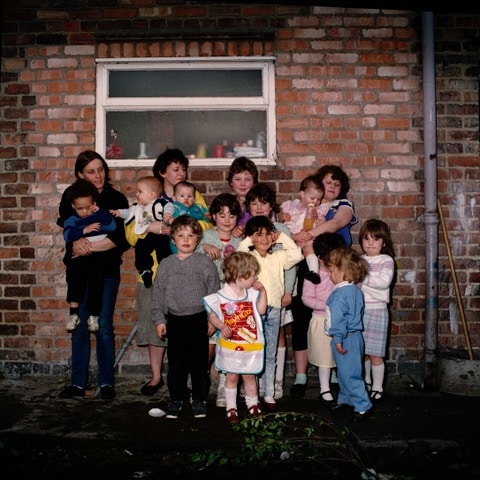
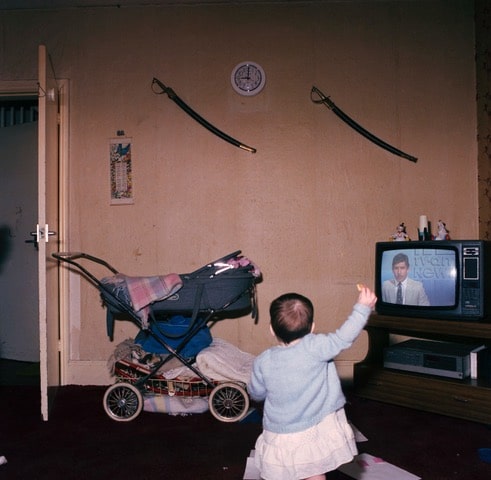
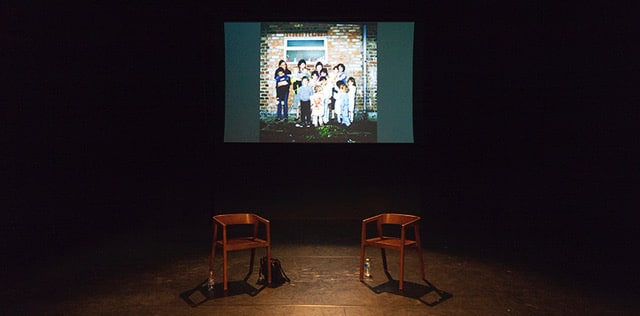
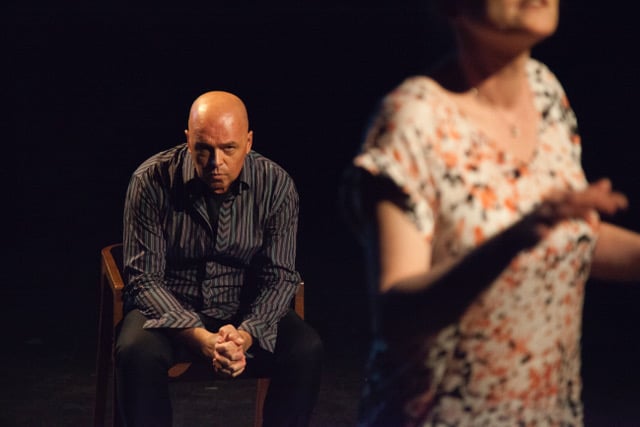
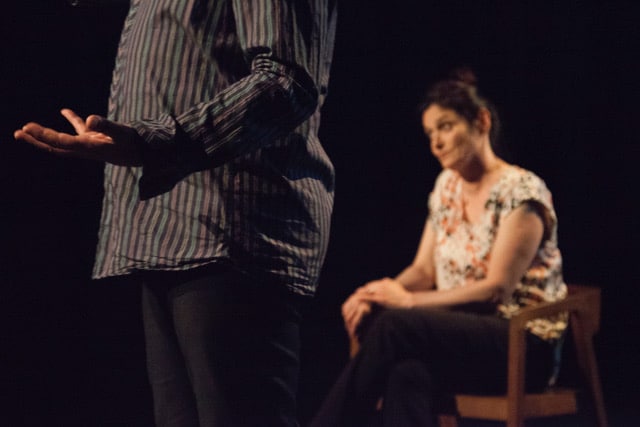
David Moore is a renowned London based photographic artist and teacher, and the Course Leader of MA Documentary Photography and Photojournalism program at the University of Westminster. David has worked as a photographer and educator since graduating from West Surrey College of Art & Design, Farnham, in 1988. His current artistic practice: “addresses agency and a critique of documentary as a genre using installation and theatre as a means posing questions around the production of knowledge through photography.”
I met David while enrolled in the MA Contemporary Photography; Practices and Philosophies program at Central Saint Martins in London. During my studies, I was inspired by his commitment to his own artistic practice when he took a sabbatical for an entire term to refocus on his own work. He returned renewed and with fresh ideas, and encouraged the students to create our own exhibition outside of the University and he reminded us of the importance of creating together. We worked together to come up with a theme and when we discussed our work with him he said “do what you think would be fun.” The exhibition was called I can explain and it encouraged students to return to their initial joy of creating.
The creative balance was restored by taking significant time out to nurture and through rest and focus on his personal artistic practice, his mind-set had adapted to that of an active agent (aktørperspektivet), with fresh inspiration and perspective, and therefore he could influence his own life positively and by example, encouraging his students to do the same. His restored faith in himself and his students illuminated us and renewed our faith in ourselves.
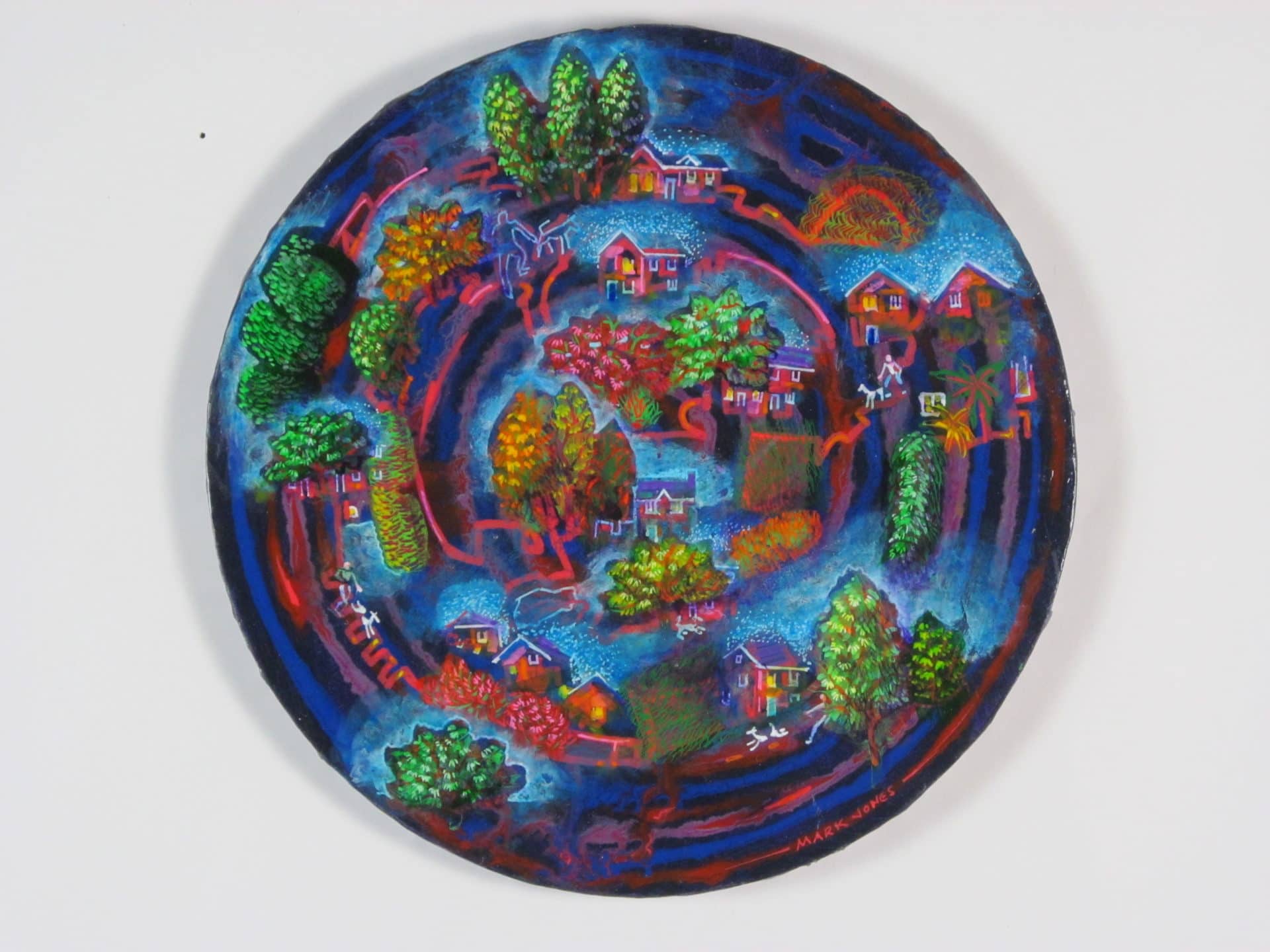
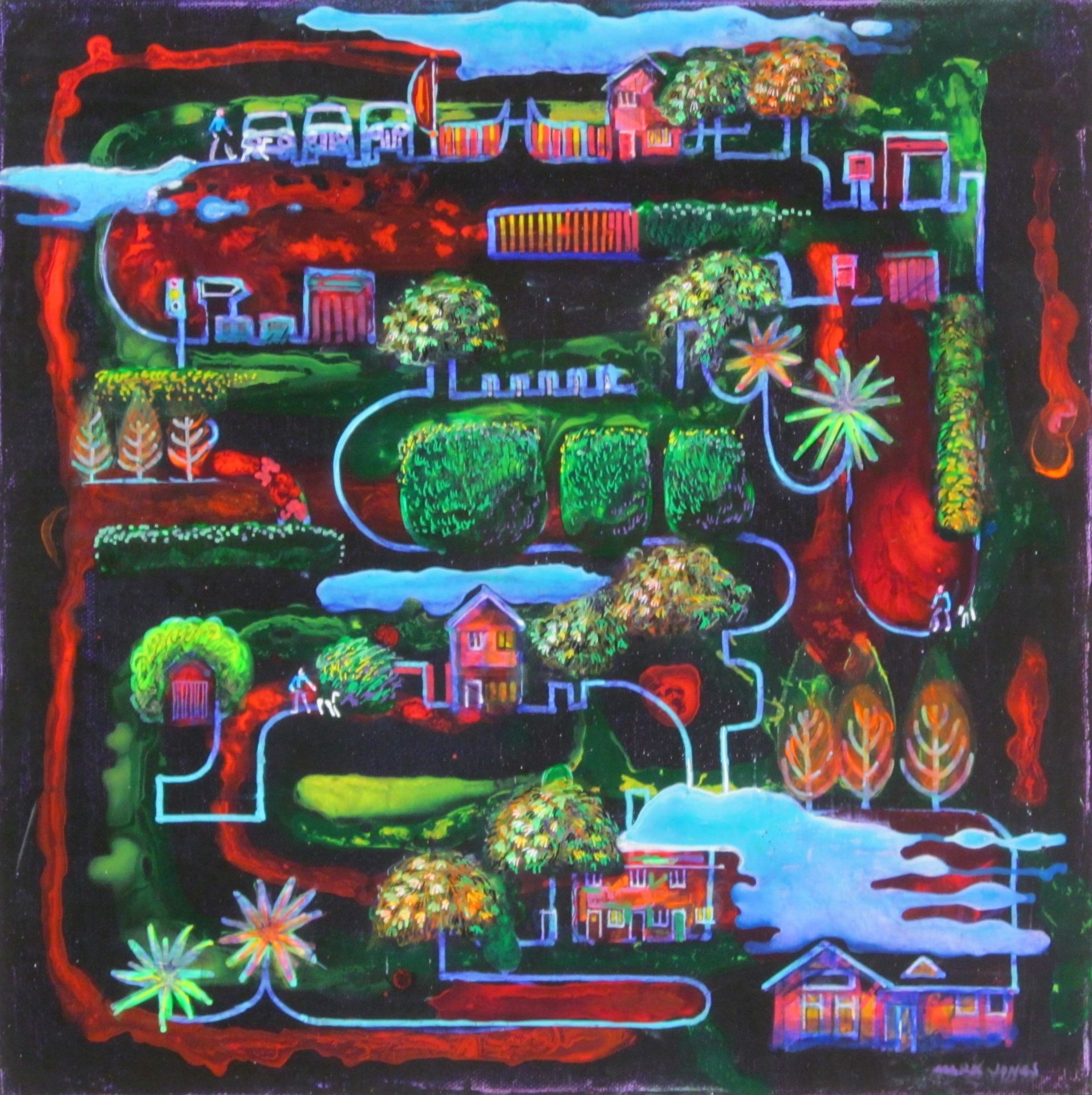
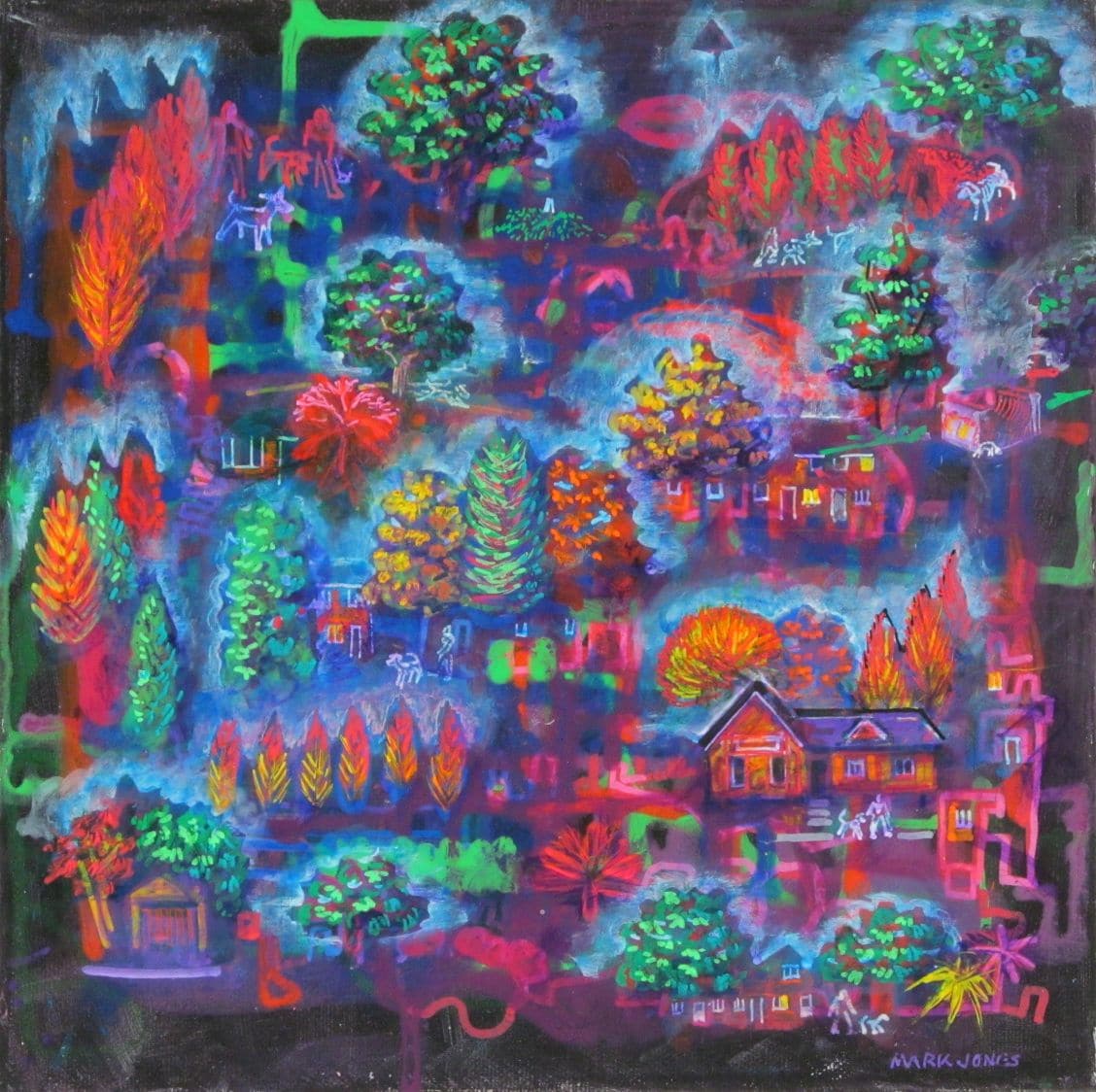
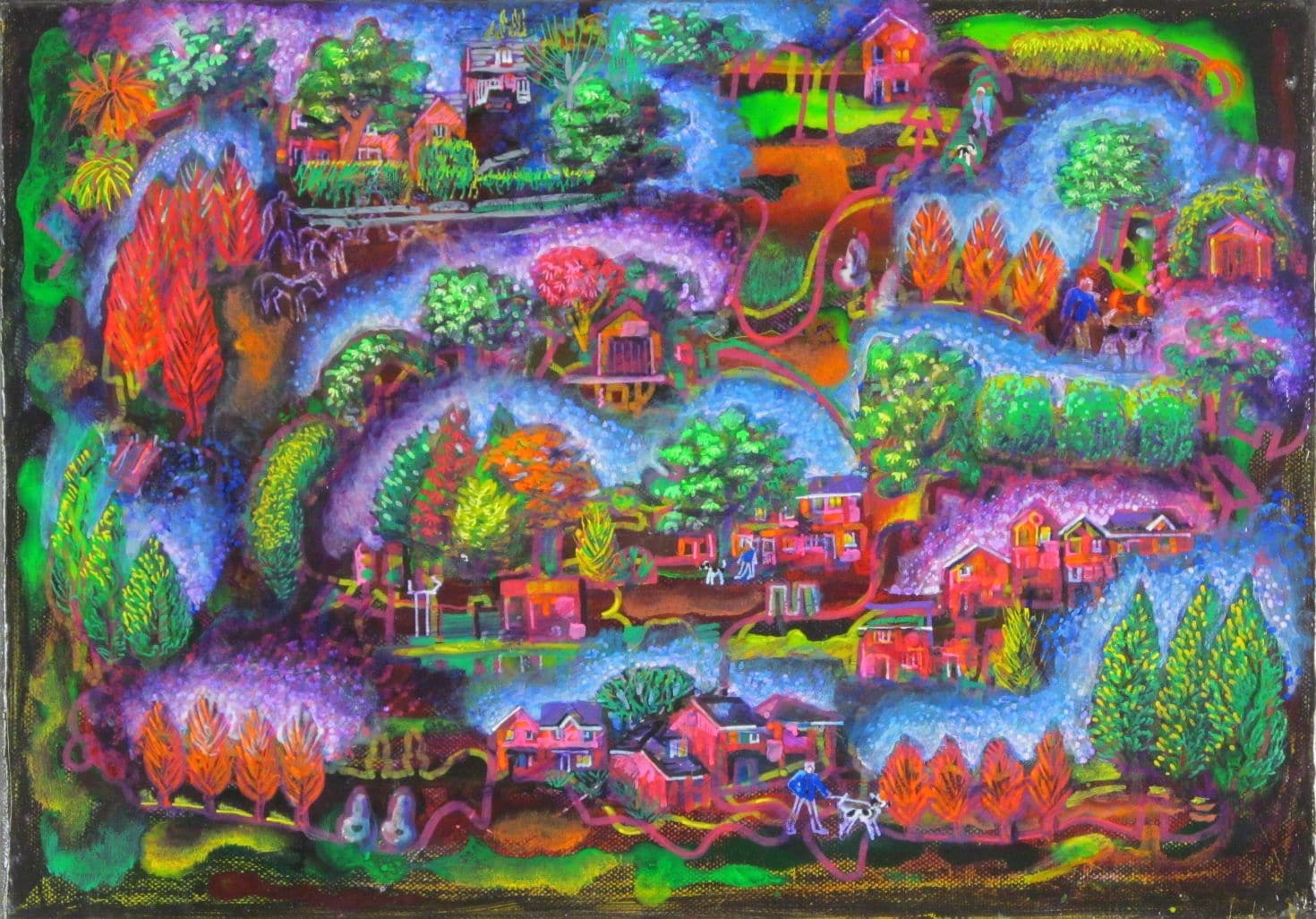
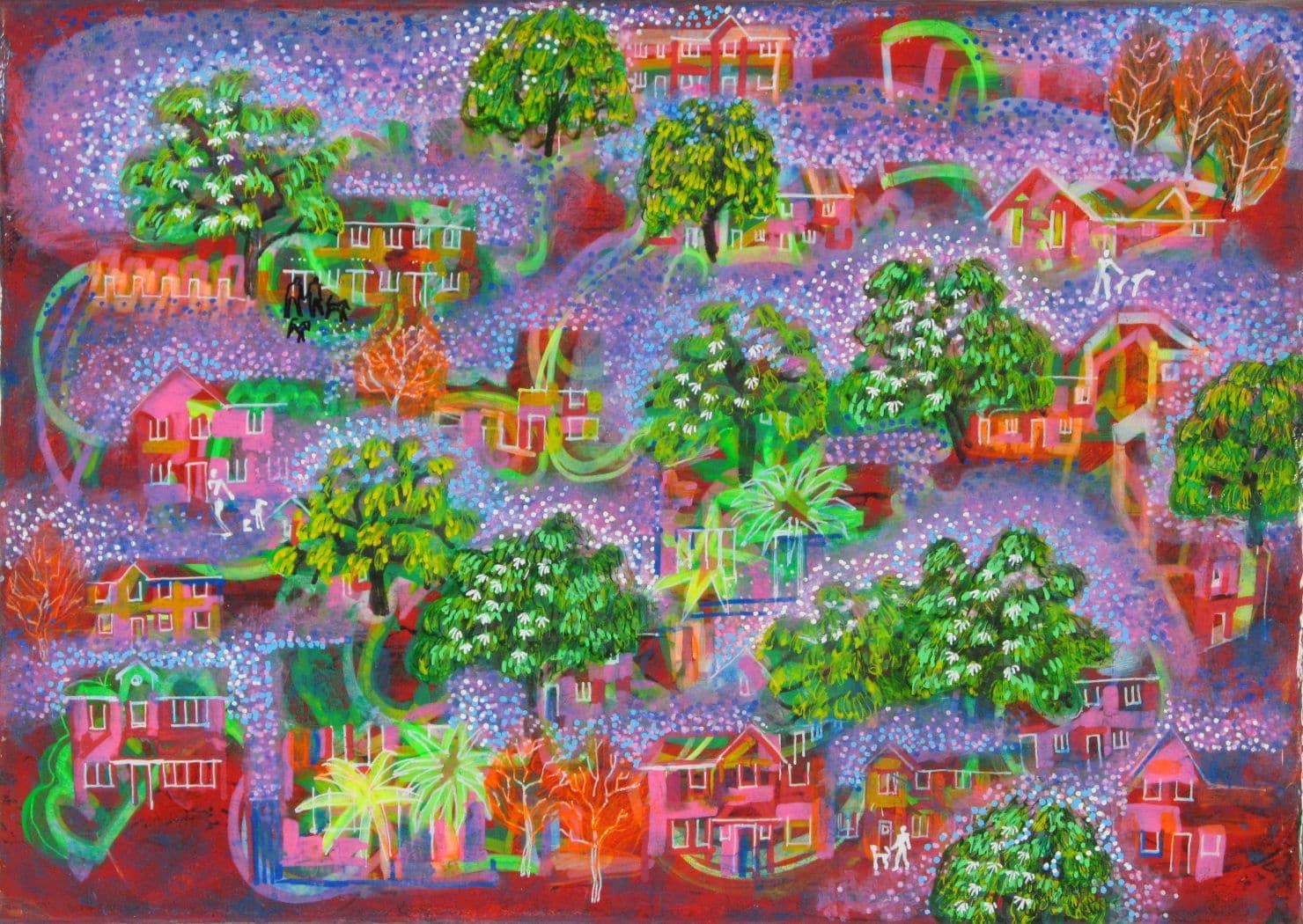
Another example of achieving a balance between personal work and teaching is Mark Jones, a successful painter and teacher, and Head of Art & Design for over 20 years at Peter Symonds College, Winchester. His current artistic practice integrates the daily activity of walking his dog Bruce around his local housing estate in the early mornings and evenings. He draws from memory and with eyes closed a continual line in his sketchpad, immediately after returning home from the walk, the intention being to record any incidents or things that have attracted his attention. He uses the same technique when he starts his paintings.
I met Mark during my teacher training placement at Peter Symonds College, where he inspired me by showing me how he incorporated his own artistic practice into his teaching life. The art lessons he taught began with him showing a painting that he was working on, where he followed the same brief as the students. He shared with them his ideas, the ebbs and flows of his working process, as well as practical painting techniques. The students found this personal approach inspiring and they learned valuable knowledge from him as well as having a respect for him as both and artist and a teacher. Through his vulnerable and personal approach to teaching, he created a fun, inspiring and encouraging environment for the students. The incorporation of his artistic practice into his daily teaching life allowed Mark to manage a creative balance in his two roles. By having faith and keeping his artistic passion alive through his teaching rather than separate from it, he inspired and encouraged students to do the same. His approach of sharing work in process with each other reminded his students of the value of sharing the creative learning process, as art is not created in a vacuum, but alternately it thrives in a community.
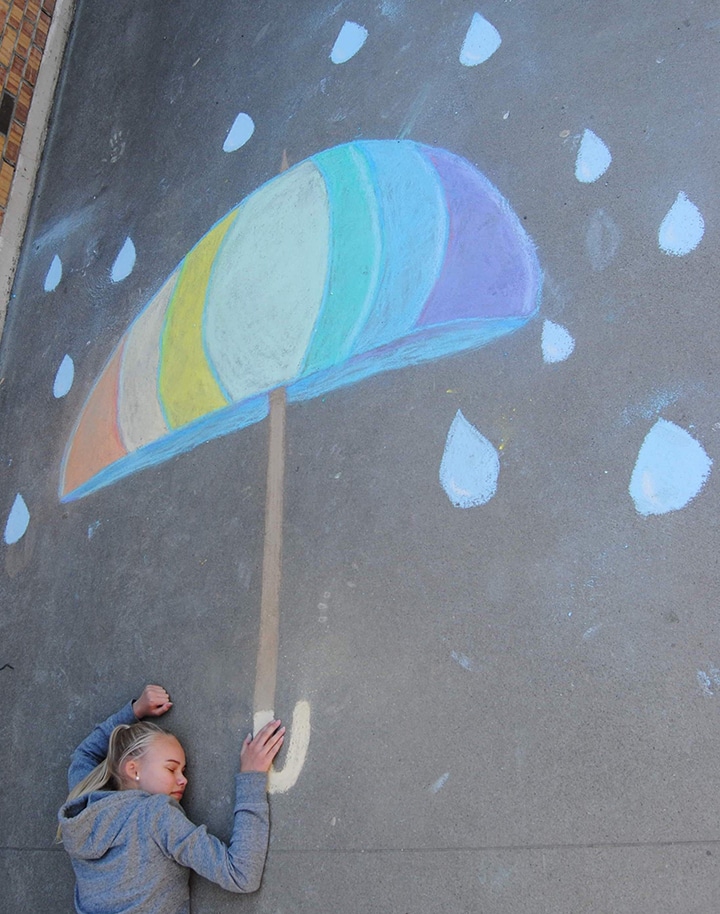
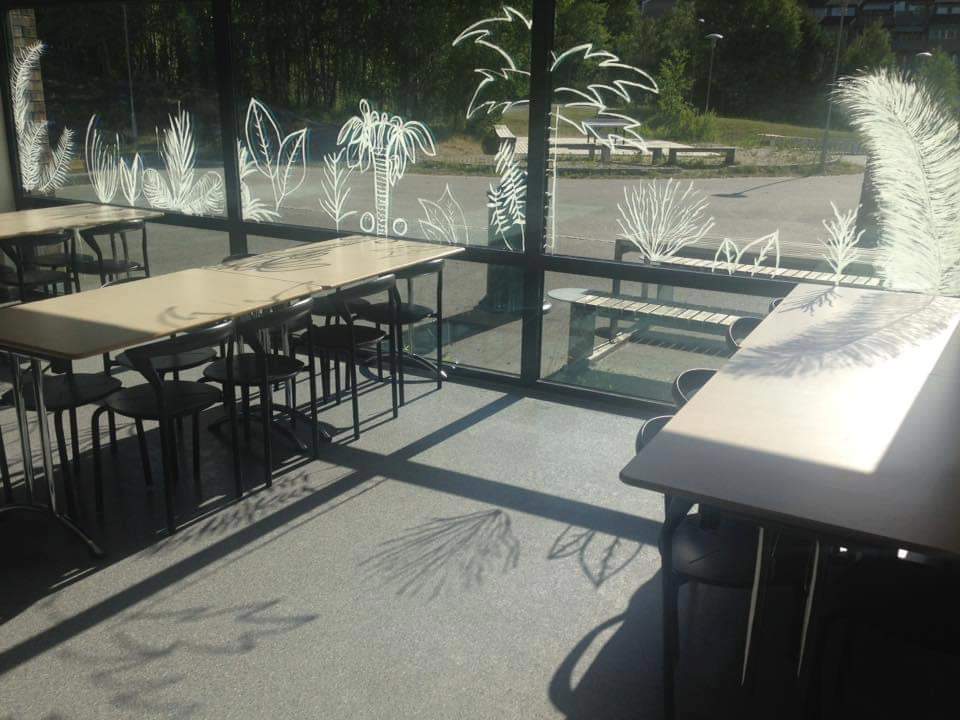
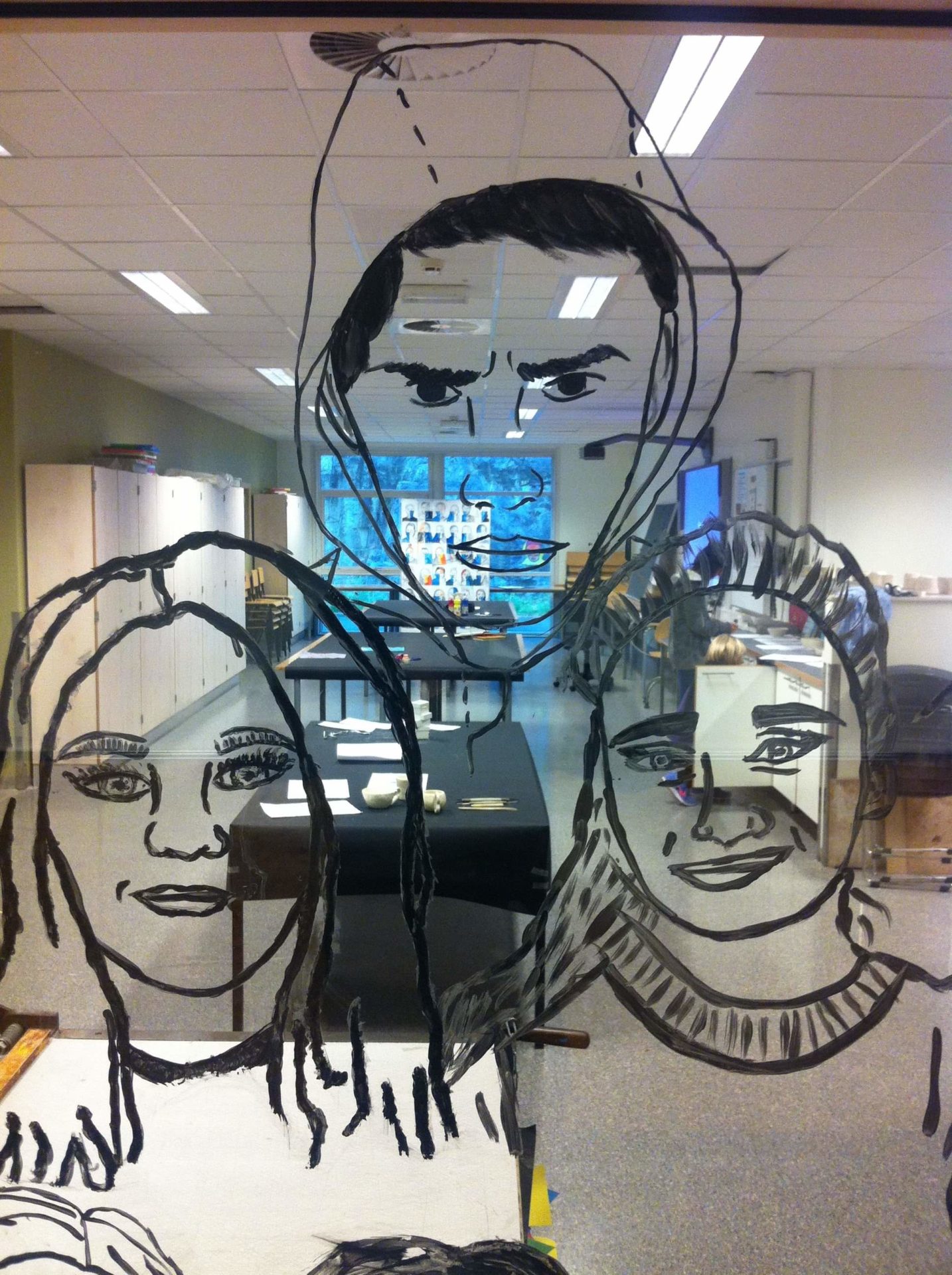
Nora Nesset Nordlund is a talented installation artist and teaches Art & Design at Haugjordet Highschool, near Oslo. Nora has worked as an artist and educator for over 10 years and her experience comes from a myriad of art degrees and qualifications from Barcelona and Oslo to The Trondheim Academy of Fine Art. Her current artistic practice centres on her interest in social and interactive art projects that incorporate her students. The role of art teacher and artist melt together and lead to large collaborative public art projects. The collective process creates a dynamic synergy, where the students inspire her and she inspires them to stretch beyond their current boundaries, to create new forms, expressions and perspectives.
Similarly to Mark Jones, I met Nora during my teacher training placement at Haugjordet Highschool, where she too inspired me by taking time out for herself to re-balance her own life and to nurture her own creative expression. She was very inspiring and talented as an art teacher and through our conversations in our mentoring program, we discussed the importance of having time to develop your own creative practice. By temporarily altering her timetable for three months and arranging a cover teacher, she reduced her hours and this enabled her to have one day off per week. This change gave her the possibility to re-balance, to truly relax on the weekends, and to go to exhibitions, to café’s and to create in community with her friends and colleagues, which is an often overlooked but crucial part of both the artistic and educational fields. This re-balancing of what was valuable to her led to a fun, inspiring and encouraging environment for the students. By having time to keep her passion alive, she was able to inspire and encourage her students to have fun with the creative process, rather than focusing solely on the outcome.
These three teachers and artists’ approaches show how highly they value art and this is where they align. Art becomes a way of creating and restoring balance in their lives. They have all adopted a mind-set where they are an active agent in their own lives, writing their own stories and developing then in the direction they would like. By doing this they are continually becoming better teachers and inspiring their students who live their lives in a way that is good for them as an individual and for society as a whole.
“Art can help change society…it does it in very incremental ways…I think it’s the collective effort of artists and institutions together”.
–Artist, Bojana Jankovic – Tate Exchange Film: Can art change society?
By seeing themselves as an active agent and insisting on the importance of their own artistic work, these educators have led by example and created a positive ripple effect on the students. The students have begun to have faith in themselves, nurture their practices and their relationships with themselves – building their confidence, resilience and growth. Each of these artists / teachers have found their own ways forward, and they remind us that art can bring about positive changes beyond the classroom. Art and education both have the possibility and shared aim of developing people as individuals and as a society. Being an artist and a teacher means working at the nexus of both fields and finding a creative balance. For those of us working as arts educators, the challenge is to define what is most valuable to us. And then find a way to center that in our own lives, and then express it to our students. Life is a constant balancing act. It’s always changing and moving but we can seek out balance through art: “All of us are a little imbalanced in some way… the art we are drawn to counterbalances us…when we’re moved by a work of art, it may be because it contains concentrated doses of qualities we need more of in our lives. Perhaps it’s full of the serenity we admire…” 9
- Guardian Culture. (2014). What is art for? Alain de Botton's animated guide | Art and design [Video]. Retrieved from https://www.youtube.com/watch?v=ZVlQOytFCRI
We need both art and education, and while commonly conceived of as opposing forces, free creative expression and critical analysis create a necessary equilibrium. The educational system oftentimes creates a structure that is divisive, but art helps to push back against this force by creating room for individual agency. If we think of education as (reason) and art as (passion) we can see that the two opposing forces are needed to create a balance.
“Your reason and your passion are the rudder and the sails of your seafaring soul. If either your sails or your rudder be broken, you can but toss and drift, or else be held at a standstill in mid-seas. For reason, ruling alone, is a force confining; and passion, unattended, is a flame that burns to its own destruction. Therefore let your soul exalt your reason to the height of passion, that it may sing; and let it direct your passion with reason, that your passion may live through its own daily resurrection, and like the phoenix, rise above it’s own ashes.” 10
- Gibran, K. (2011). Kahlil Gibran's The prophet (2nd ed.). London: Watkins Pub
“Art shows us what it is to be human.”
–Artist, John Ruskin – Tate Modern Film: Why study art?
Victoria Batt (b.1985 in Oslo) is an artist, educator and writer with a wide variety of experience in the art world. Her Masters degree in Fine Art Photography is from Central Saint Martins in London. Having worked as artists-in-residence with Tate Modern, she has created workshops engaging the public with her practise, inviting them to create and perform, through the medium of Photography. Education and participation is at the heart of her practise as she continues to develop research lead projects. She currently teaches Photography at a renowned Sixth Form College near the city of Winchester.

